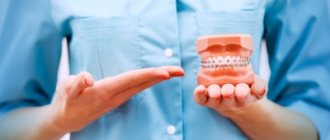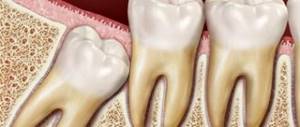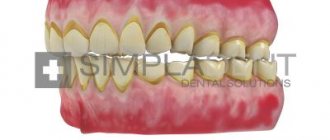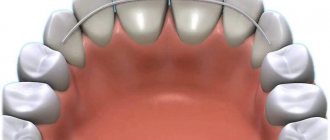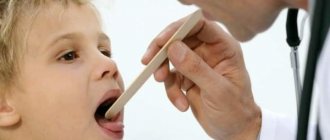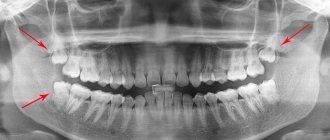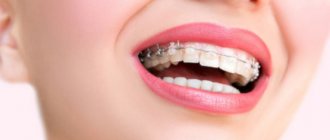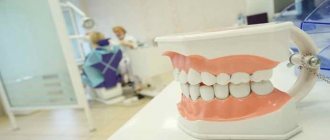Orthodontist: what he does and what he treats
The services of the dental clinic include orthodontic treatment. Orthodontics is a branch of dentistry that studies the causes of dental anomalies, methods for their diagnosis and correction. Dental anomalies are widespread among diseases of the maxillofacial system.
An orthodontist is a doctor who diagnoses and treats dental anomalies in children and adults. This is a narrow dental specialty: the doctor undergoes five years of training at a medical institute, then two years of residency in the specialty “Orthodontics”. This doctor treats adults and children.
How is the appointment going?
Like any other specialist, a dental surgeon first of all listens to patients’ complaints and collects anamnesis. He must know everything related to the problem that worries the patient. Then it’s time for a visual inspection. The doctor examines the problem area, and he can use tools such as a dental mirror, spatula, probe and others.
Using light tapping, the doctor identifies the area that is causing pain. If we are talking about soft tissues, palpation is performed. The doctor pays attention to swelling, redness, altered areas of the skin and mucous membranes, as well as the patient’s appearance. How the examination will be carried out directly depends on the specific case.
What does an orthodontist treat?
A doctor of this specialty in dentistry in Otradnoye treats:
- bite pathologies: mesial, distal, deep, straight, open, cross;
- crooked teeth;
- anomalies in the timing of tooth eruption: delayed eruption, late eruption, etc.
- incorrect position of the tooth/teeth in the oral cavity, when one or more teeth are located abnormally, for example, outside the dentition;
The orthodontist also diagnoses abnormalities in the number, size, shape of teeth and refers the patient to related specialists for treatment: an orthopedist, a therapist, a surgeon.
What diseases are most often treated by an orthodontist?
Most often, patients come to this doctor to correct their malocclusion. Moreover, patients notice such pathologies
Among the pathological bite are:
- Mesial (progenic): in the anterior region, the lower incisors overlap the upper ones or form a direct closure. With this pathology, the patient experiences protrusion of the lower jaw.
- Distal: The upper front teeth protrude above the lower teeth. The front teeth do not close together; upon examination, a gap is visible between them. The lower jaw is behind the upper jaw.
- Crossbite: there is a violation of the facial configuration, a displacement of the chin towards the lips.
Treatment of malocclusion must be started in a timely manner to avoid complications. We recommend that you consult with an orthodontist to determine if your situation has an overbite and how to treat it.
How does an orthodontist perform diagnostics?
An examination and diagnosis is required before starting treatment. During the consultation, the orthodontist conducts:
- collection of patient complaints and anamnesis data;
- examination of the patient’s face: symmetry, proportionality, and facial profile are assessed;
- when examining the oral cavity, the doctor fills out the dental formula, determines the bite, examines the frenulum of the lips, tongue, etc.;
If parents and a child come to the clinic for orthodontic treatment, the doctor conducts a survey of the parents about the child’s condition, its characteristics, etc.
Additional research methods in orthodontics include:
- Measuring plaster models of jaws: the doctor takes impressions of the jaws and casts plaster models. They are used to measure the dentition, diagnose their symmetry, and more.
- Orthopantomography (OPTG): the resulting image shows all the teeth, their roots, rudiments, and the structure of the bone tissue of the jaws.
- Teleradiography (TRG) in the direct and lateral surfaces: allows you to study the structure of the facial skeleton, establish an accurate diagnosis, and also predict the success of treatment.
During the consultation, the orthodontist will tell you what studies will be required in this case and what treatment methods are possible.
D
Gnathologist
Gnathology is a branch of dentistry that studies the problems of the dentofacial apparatus and solves problems associated with its functioning. Simply put, gnathology, as a medical specialty, deals with the pathology of the jaws.
A dentist who has specialized in gnathology is called a gnathologist. This is a very rare medical specialty, and not every clinic employs doctors with such a narrow specialization. At Kostamed, the chief physician of the clinic, Yuri Aleksandrovich Kostylev, works as a dentist-gnathologist.
Goals and objectives of gnathology
The main task of gnathology is to assess the functional status of all components of the dental system: masticatory muscles, temporomandibular joint, periodontium, dentition and individual teeth. Gnathology studies not just the static state of all these elements - using special research methods, dynamic parameters are assessed, for example, the biomechanics of chewing. Dentists who have specialized in gnathology study the geometry of the chewing part of the skull and determine the aesthetic relationship between the proportions of the jaws and the rest of the face.
The purpose of gnathological studies is to identify the pathology of the morphofunctional state of the dental system. The data obtained allows specialists to correct existing violations. A consultation with a qualified gnathologist dentist, which can be done in our clinic, will allow you to:
- determine the optimal scheme for correcting violations of intermaxillary interaction - a specialist will advise how best to correct the bite;
- develop tactics for treating pathology of the TMJ and lower jaw;
- optimize the selection and production of dentures;
- harmonize the work of the masticatory muscles.
What does a gnathologist do?
During the implementation of special examination methods, elements of pathological interaction between the upper and lower jaws, tooth surfaces, masticatory muscles, and dentition are identified. This sometimes requires instrumental examinations:
- Electronic condylography is the main method for diagnosing TMJ dysfunction.
- Rheoarthrography.
- MRI and CT scan of the TMJ and other parts of the dental system.
- Phonoarthrography.
- Axiography.
You should not think that a gnathologist uses only instrumental research methods - the classic examination and palpation of the muscles of the face and jaws has not been canceled. These elementary examination methods allow a competent specialist to immediately make a preliminary diagnosis and determine the scope of a detailed examination and treatment tactics.
Treatment of gnathological disorders by a gnathologist involves the use of therapeutic and diagnostic devices, such as:
- disconnecting and centering tires;
- stabilizing tires;
- relaxation bite blocks.
Gnathological treatment often requires selective grinding of teeth to eliminate pathological dental occlusion.
Important! Occlusion in gnathology refers to the contact or closure of the teeth of the upper and lower jaw.
In cases where the help of a gnathologist alone is not enough, orthodontists are involved in the treatment of the patient. They help to restore the normal relationship of teeth through prosthetics. One of the advantages of our clinic is that we have all the necessary specialists. This allows you to optimize the treatment process and not waste time searching for dentists of the right profile.
Problems requiring the help of a gnathologist:
- limited opening of the oral cavity;
- defective occlusion of the dentition;
- to determine the amplitude with which the lower jaw moves;
- complaints of clicking and crunching in the temporomandibular joint when chewing;
- to determine the optimal type of dentures during the implantation procedure;
- asymmetry of teeth closure;
- bruxism.
Tinnitus of unknown origin, tension in the masticatory muscles and pain during chewing also require consultation with a gnathologist. Often, consultation with this specialist is required after dental and orthodontic treatment. Often, a poorly executed filling, an incorrectly made or incorrectly installed denture are the source of gnathological problems.
This is interesting! Some problems in the gnathology profile are solved with the help of injections of botulinum toxin, which has the property of relaxing muscles. This effect will relieve pathological spasm and correct the bite.
Cost of treatment with a gnathologist at the Costamed clinic
Dentistry "Costamed" offers a comprehensive and effective solution to any dental problems, including those related to gnathology. The cost of the most detailed consultation with a gnathologist in our clinic is 5,000 rubles.
During the consultation, a comprehensive study of the functional status of the dental system is carried out. We solve both technical and aesthetic problems. During treatment, our specialists take into account the individual harmonious features of the face.
By contacting Kostamed dentistry, you are guaranteed to get rid of bite problems and pain when chewing. Our doctors will help restore the functioning of the TMJ after jaw injuries of any complexity and in case of chronic diseases of the dental system.
Make an appointment with a gnathologist in Perm by phone or through the online registration form on the website. You can call around the clock - at any time of the day, a specialist will answer the phone call and you will choose a convenient time for a consultation with a gnathologist.
How does an orthodontist treat?
Correcting a malocclusion is possible in several ways:
- The bracket system is a complex in design, but highly effective system in modern orthodontics. It allows you to create a functional and aesthetic optimum in the human dental system. Suitable not only for children. In adulthood, it is also possible to correct the bite with braces.
Braces are structures made of special metal locks and arches installed on the teeth. They are non-removable. Correcting the bite requires long-term wearing (from a year or more). The duration of wearing depends on the initial situation, the age of the patient and the characteristics of the maxillofacial system.
- Orthodontic plates are special structures that have a plastic base and various metal fasteners, screws, hinges, and springs. They are used in children, starting with primary occlusion, as well as during the period of teeth change: up to 12-14 years. They allow you to expand, shorten, lengthen the dentition, move teeth, change their position and much more.
Plates are removable orthodontic structures that must be maintained. The type of plate and duration of wearing is determined by the orthodontist. The production of plates takes place in a dental laboratory using individual casts of the jaws.
The success of treatment with plates in childhood depends not only on the correct manufacture of the desired design, but also on a responsible approach to wearing the plate by parents and the child. You should strictly follow the doctor’s recommendations, wear the plate for the required number of hours a day, and perform the necessary hygiene procedures.
Inflammation of the jaw bone and oral mucosa
Let's remember that caries and pulpitis that have not been cured often cause various complications, purulent and inflammatory processes leading to life-threatening consequences:
- periodontitis: inflammation of the tissue at the apex of the tooth root is characterized by unbearable pain and can lead to loosening and loss of dentition,
- periostitis: can spread to the entire jaw and go deep into the organs if left untreated,
- osteomyelitis: inflammation of the jaw bone is accompanied by pain radiating to the head, increased body temperature, general weakness and enlarged lymph nodes,
- abscesses: in this case, only soft tissues are affected by pus, but a maxillofacial surgeon will also be able to provide quality assistance.
The photo shows an operation to remove pus.
Serous and purulent complications can also be caused by poorly performed endodontic treatment of a tooth, trauma, or side effects of medications.
This specialist will also provide emergency assistance in the presence of phlegmon, lymphadenitis, inflammation of the salivary glands, maxillary sinuses and temporomandibular areas.
Custom sports mouth guards
An orthodontist not only treats various pathologies, but also helps prevent dental injuries. Contact sports (boxing, hockey, football) require protection of the front teeth from accidental injury.
To protect the dentition, individual mouthguards are made. They fit precisely to the teeth, are securely fixed in the oral cavity and protect athletes from dental injuries. Made from hypoallergenic materials, used for adults and children.
To make such a mouth guard, you will need two visits to the doctor:
- Taking impressions of the jaws. They are sent to the laboratory, where plaster models are cast, and the mouthguard itself is then cast.
- When the mouth guard is ready, the patient is invited to try it on and is given the design. The doctor gives recommendations on how to care for the mouthguard.

